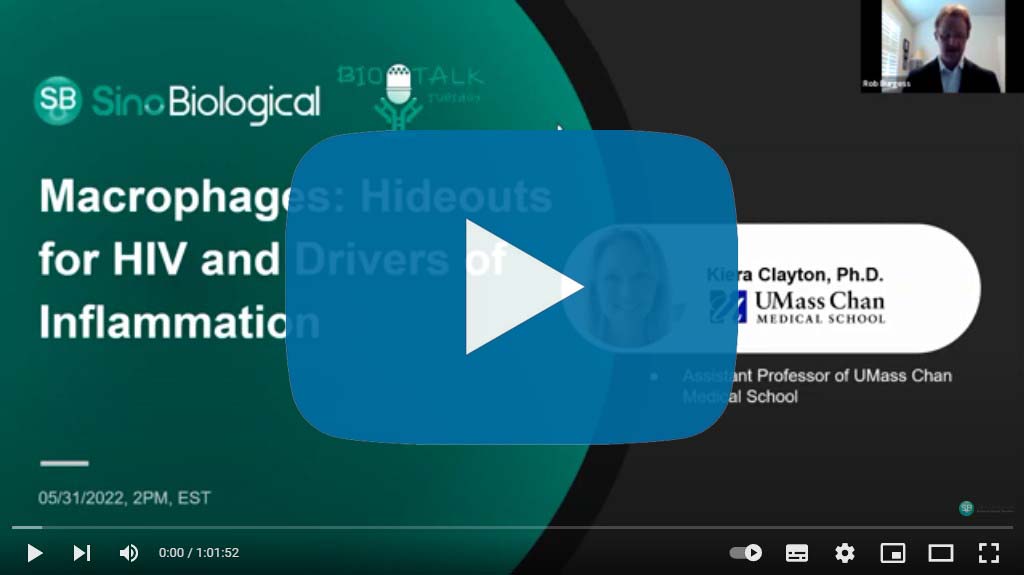Macrophages
Hideouts for HIV and Drivers of Inflammation
 Webinar: Macrophages - Hideouts for HIV and Drivers of Inflammation
Webinar: Macrophages - Hideouts for HIV and Drivers of Inflammation
Presented by Sino Biological
Speaker: Kiera Clayton, PhD, Assistant Professor of UMass Chan Medical School
Content
Human immunodeficiency virus (HIV) is a chronic infection that causes acquired immunodeficiency syndrome (AIDS) and currently infects over 38 million people. Despite the success of antiretroviral therapy (ARV) in controlling HIV infection, almost 700,000 people died from AIDS-related deaths in 2019. For people who have access to ARVs (only 66% of people living with HIV), infection-associated inflammation persists, increasing the risk of developing co-morbidities such as cardiovascular disease and HIV-associated neurocognitive disorder. This emphasizes the need to study the pathogenesis of HIV to aid the development of cure strategies. Unlike viruses that cause acute infections, like influenza or SARS-CoV-2, the immune system is unable to eliminate the virus from the body. Understanding what cells are infected by the virus and how killer immune cells interact with them will help us understand why HIV persists. While white blood cells called CD4+ helper T cells are the main cell type infected by HIV, tissue-resident phagocytes, called macrophages, also become infected and persist despite ARV treatment. Our lab is studying how macrophages persist in the presence of killer immune cells.
Key Learnings:
- White blood cells that can kill cancer and virus-infected cells, including CD8+ T cells and natural killer (NK) cells, experience more difficulty with killing HIV-infected macrophages compared to HIV-infected CD4+ T cells.
- The poor killing of HIV-infected macrophages further drives inflammation that could contribute to the development of co-morbidities.
- Current efforts are focused on studying the mechanisms of how macrophages inhibit CD8+ T cell and NK cell killer activity.


